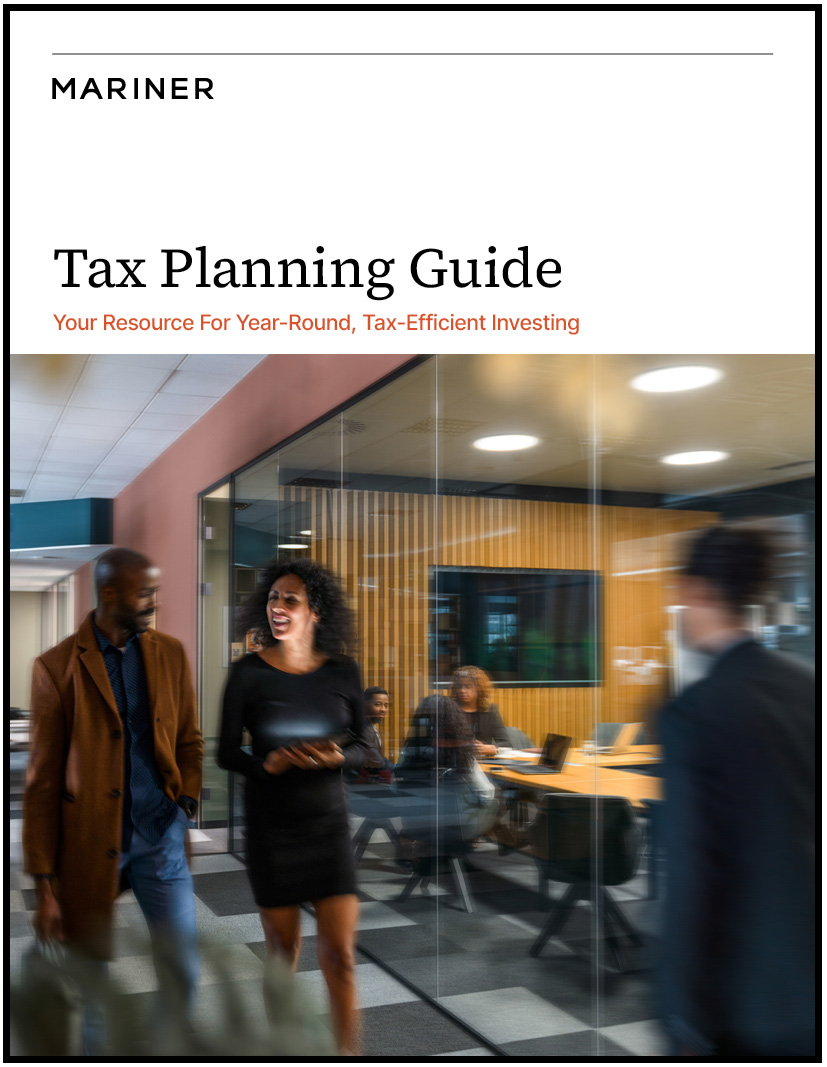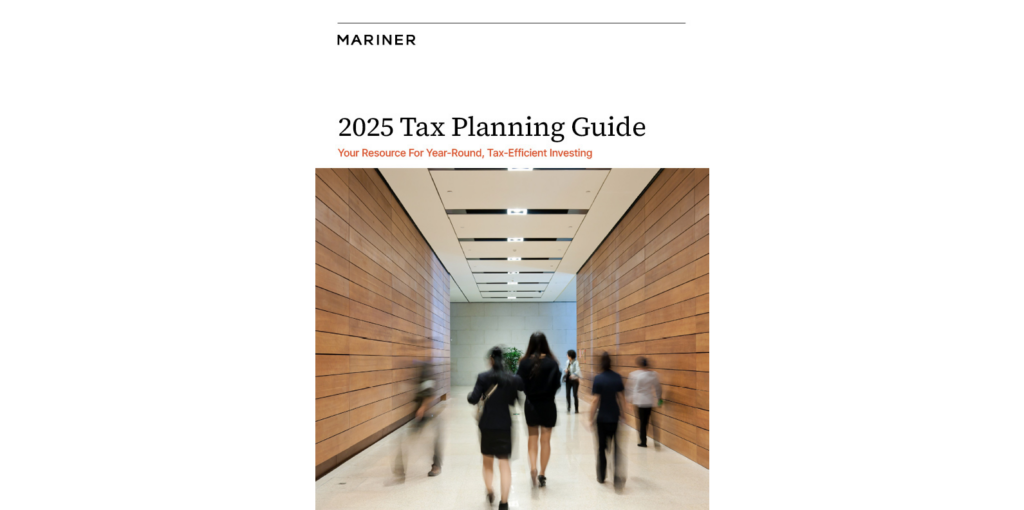Your Questions, Answered: Tax Location
On this week’s episode of Your Questions, Answered Steve Christensen and Brian Leitner discuss the tax location strategy, and answer the following question:
“What does the phrase ‘tax location’ mean?”
Do you have questions you’d like answered? Email them to QA@marinerwealthadvisors.com, and we’ll provide answers.
Transcripts:
Brian Leitner: You have questions. We have answers. Back with another quick clip. The question today is: I’m very familiar with asset allocation, but what I’m not familiar with is something that I recently heard, which is called, tax location. Can you talk a little bit about tax location and what that really means when advisors talk about that?
Steve Christensen: Yeah, absolutely, Brian. So, a tax location or asset location really is a strategy that’s designed to exert control, obviously to try to minimize a client’s tax situation as a result of their investment portfolio. I oftentimes describe it as the arranged marriage between investment level tax characteristics and account level tax characteristics. So, it’s a simple, but very powerful strategy that allows you to increase the investor’s after-tax returns.
Brian: So, how does it work?
Steve: So, I think to really explain the strategy we need to re-examine the attributes of the various account types and the various investment types. And so really thinking about the account types as being your taxable investment accounts, perhaps your pre-tax or tax deferred IRA account, and then the Roth.
So really thinking about those in more detail. You have the taxable account, it’s just that, it’s taxable. All the activity that occurs within the account could be subject to taxes. That’s in the form of dividends, interest, capital gains, mutual fund distributions. All of these things are subject to taxes. That’s kind of a negative aspect of the account.
The positive attribute of the account is the fact that there is a step up in cost basis. That’s associated with passing on securities to beneficiaries. Take, for example, a client that was fortunate to invest a hundred thousand dollars in a very good stock that stock grows to 2 million. We now have a $1.9 million pent up capital gain to the extent that they pass that on to their beneficiaries, that capital gain is erased through a step up in cost basis. It’s a very effective way to pass on wealth to the next generation or to your beneficiaries.
The idea with this type of an account is you want to put tax efficient assets in the account. Growth oriented stocks that pay qualified dividends and stocks that are going to grow in value that they can capitalize on that step up in basis. So that’s the taxable account. The pre-tax IRA or tax deferred IRA is just that. Everything that occurs within the account is sheltered from your tax return as it relates to the investment activity, dividends interest, capital gain. The difficulty with this is the whole account balance really represents a future tax liability. For an investor that’s looking to strike inappropriate asset allocation across their consolidated accounts. They may choose to drive growth in other accounts, and instead choose to compliment the growth with yielding investments, bonds, alternative income, what have you and shelter that income inside of their IRA account.
So that’s the second type of account. The third account of course, is the Roth. We all love the Roth. Tax deferred, I’m sorry, it’s tax free. And all the activity that occurs within the account is indeed not going to be reported on your tax return. This account oftentimes is our investors most long-term account. There are no required minimum distributions associated with it. They oftentimes think about it as an important part to their legacy. We really have a long-term time horizon here. We’ve got some really positive tax attributes that make this account a very, an ideal account to drive growth. We would recommend for our clients oftentimes that they are taking a more growth-oriented asset allocation within their Roth IRA account.
Brian: So that’s terrific. Maybe, maybe if, just give us an example of a moderate investor, what a balanced portfolio might look like. They have assets throughout their portfolio in these different accounts and a perfect picture of what might that look like.
Steve: All three accountant types commonly found amongst the clients and prospective clients that we’re working with. So, let’s take, for example, somebody that has a $4 million net worth, just for ease of number purposes.
Let’s say they’re also looking to strike a balance type of an approach, maybe half their portfolio in stock half of it in bonds. In this example, they’ve been gainfully employed. They’ve saved quite a bit of money in their pre-tax IRA through employer-sponsored retirement plans. They’ve got a $2 million IRA; they’ve got a $1 million taxable account and they also had the foresight to fund a Roth early on. And that rock is grown $2 million. There’s their $4 million net worth. We would look at the IRA account as an ideal account for them to park their fixed income or yield oriented investments. Reason being, is the yield associated with those investments.
Typically taxed as ordinary income is going to be sheltered from their tax return because it’s in that tax deferred wrapper. You’re not growing the value of the account exorbitantly to the detriment of growth elsewhere. So you’re not growing that tax liability. So now we’ve got half of their portfolio accounted for within the IRA account by way of the bonds or fixed yielding investments.
So now we have the other side, which is the equities. We would advocate that they would put equities inside of their Roth again, because that growth is that Roth is going to be tremendous. And we want that to occur in taking advantage of the tax attributes of the Roth, but also, we would encourage them to allocate more equity towards their taxable account. Again, looking at the fact that equities typically are paying qualified dividends, which is a good rate within the tax code. You have long-term capital gains associated with, rebalancing and harvesting gains. So again, another advantageous rate within the tax code, and then to the extent that they passed those assets on, you have that step up in basis. There you have this $4 million net network client with various account types and striking that balance or that that balanced risk profile that they’re trying to target.
Brian: Steven that’s very helpful. I know a lot of folks understand the benefits of diversification, but not all of them understand that the entire tax location strategy and, a lot of folks who are trying to achieve not necessarily X rate of return, but what is the after-tax rate of return, right? What is that, tax alpha that benefit that I’m trying to gain and what you’re talking about, I think does that very well.
One thing to note of course, is that there may be some changes, based upon the tax code, and there always are, but now even more so, and that step up in basis. That’s on the table to potentially be changed. And ultimately a lot of folks believe that taxes are going to be headed upward in the next few years. And if that’s the case, I think the strategy you’re referencing, only becomes that much more beneficial as we look at planning and one’s overall situation.
So, Steven, thank you very much for being here really appreciate your time today.
Steve: Thank you, Brian.
Brian: And if anyone else has questions they’d like answers to, they can feel free to email us at QA@marinerwealthadvisors.com. Thanks for watching.
Tax Guide: Your Resource for Year-Round Tax-Efficient Investing
Year-round planning with an advisor could help improve your overall wealth plan. Find out more by downloading our tax guide.

